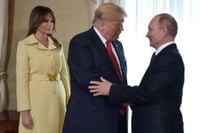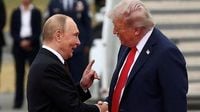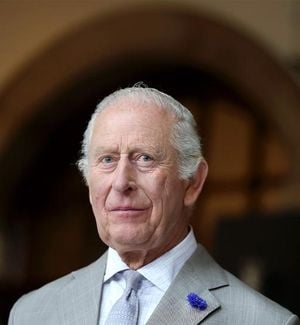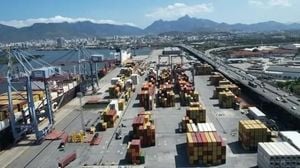President Donald Trump’s recent moves on the Ukraine war have sent ripples through diplomatic circles, signaling a significant shift in U.S. policy and exposing the complexities of forging peace in Eastern Europe. Just days after floating the idea of freezing current front lines as a basis for a ceasefire, Trump abruptly postponed a much-anticipated summit with Russian President Vladimir Putin in Budapest, citing a lack of progress on substantive issues. The decision, announced on October 21, 2025, has left allies, adversaries, and observers alike scrambling to interpret the next phase of the conflict—and what it means for Ukraine’s embattled future.
Speaking in Washington, D.C. on October 20, Trump declared, “I do not believe Ukraine can win the war against Russia,” though he added, “victory for Kyiv is still possible, but unlikely.” According to BBC, these remarks marked another pivot in Trump’s stance, coming just days after he suggested freezing the front lines as the foundation for a peace deal. The statement landed with a thud in Kyiv and across European capitals, where leaders have repeatedly insisted that international borders must not be changed by force.
The planned Budapest summit, initially floated after what Trump described as an “extremely frank and trustful” phone call with Putin, was supposed to offer a glimmer of hope for progress. The meeting was tentatively scheduled for late October or early November, but as the days ticked by, optimism faded. A White House official told Sky News there were “no plans for the presidents to meet in the immediate future,” attributing the delay to Russia’s rigid stance on the Ukraine war and a lack of movement in diplomatic channels. Secretary of State Marco Rubio and Russian Foreign Minister Sergei Lavrov spoke by phone on October 21, with the call described as “productive,” but ultimately failing to yield a breakthrough.
The cancellation comes against a backdrop of mounting frustration in Washington and across Europe. According to Reuters, two U.S. officials said the talks stalled over Moscow’s insistence that any peace deal must grant it control over the entire Donbas region—a demand Ukraine and its allies flatly reject. Over the weekend, the Kremlin reiterated its terms in a private communique, or “no paper,” effectively rejecting Trump’s proposal to freeze the front lines and cement existing territorial gains.
Putin’s reluctance to engage in meaningful talks has not gone unnoticed. Ukrainian President Volodymyr Zelensky, speaking in his nightly address on October 21, accused Russia of becoming “less interested in diplomacy” after Trump hesitated on supplying long-range Tomahawk missiles to Kyiv. Zelensky argued that only “sustained military and diplomatic pressure will force Russia to negotiate seriously,” echoing the sentiment of many in the Ukrainian government who see Western resolve as the linchpin for any future settlement.
European leaders, meanwhile, breathed a collective sigh of relief at the postponement of the Budapest summit. The UK, France, and Germany have been vocal in their opposition to any deal that would force Ukraine to cede territory, especially the resource-rich Donbas. In a joint statement, these nations backed Trump’s call for an immediate halt to fighting along current lines but insisted “no land should be surrendered.” They also pledged to advance plans for using $300 billion in frozen Russian assets to fund Ukraine’s defense—a topic set for further discussion at the upcoming EU summit in Brussels.
Ukraine’s position remains both pragmatic and resolute. The government in Kyiv has long agreed in principle to an immediate end to fighting, provided it is followed by meaningful peace talks and cast-iron security guarantees from Western allies. As The Independent reported, experts like Field Marshal David Richards believe Ukraine cannot defeat Russia outright, given that Moscow currently controls about 20% of Ukrainian territory—including the Crimean peninsula, which was annexed in 2014. Yet, Ukraine’s military has demonstrated resilience, conducting deep strikes against Russian logistics and maintaining fierce resistance near Kramatorsk and Zaporizhzhia, even as Russia continues its drone barrages on Ukrainian cities.
The war’s toll on Russia has been steep. Roughly 40% of the Russian economy is now dedicated to the war effort, and the country labors under a heavy burden of Western sanctions. The possibility of halting fuel imports from Moscow to Hungary and Slovenia could further hobble the Kremlin’s finances. Despite these pressures, Russia’s forces—though often described as poorly motivated and badly led—are rapidly adapting to drone warfare, a development that could reshape the conflict’s trajectory in unpredictable ways.
For Ukraine, the prospect of a ceasefire is not inherently unwelcome, but only if it comes with credible guarantees against further Russian aggression. The UK has pledged £100 million to a future security force aimed at keeping Russia out of more Ukrainian and Eastern European territory—a massive undertaking that would require sustained international effort. As Sky News noted, Ukraine and European nations jointly insisted that “international borders must not be changed by force,” while also expressing support for Trump’s position that fighting should stop immediately and that the current line of contact should serve as a starting point for negotiations.
Meanwhile, Trump’s own strategy appears in flux. He has wavered on the question of supplying Tomahawk missiles to Ukraine, at times hinting that such a move could “defeat” Russia by enabling deep strikes against key targets. Yet, his public statements have grown more skeptical about Ukraine’s prospects for outright victory. “Pressure leads to peace,” Zelensky posted on Telegram, underscoring the Ukrainian view that only a combination of military strength and diplomatic resolve can bring Moscow to the table.
The Kremlin, for its part, remains cagey. Spokesman Dmitry Peskov said on October 21 that “serious preparation” is needed before any summit, while Lavrov dismissed the idea of a ceasefire, claiming it contradicted earlier frameworks discussed in Alaska last August. Russia’s current occupation of about one-fifth of Ukraine is seen in Moscow as a strategic advantage, with the prospect of frozen front lines legitimizing its control and buying time for future operations.
As the diplomatic chess game continues, NATO Secretary General Mark Rutte is scheduled to meet with Trump on October 22 to discuss the alliance’s support for Ukraine and broader efforts toward lasting peace. The upcoming EU summit and a planned London meeting of the “Coalition of the Willing” will further align Western strategies, but the core question remains: can deal-making alone end a war rooted in territorial conquest, or must military realities force Moscow’s hand first?
For now, the pause in U.S.-Russia summitry buys time for all parties—but risks prolonging a brutal stalemate that has already exacted a staggering human and economic cost. As winter approaches and both sides dig in, the world watches, hoping that the next diplomatic move will bring genuine progress rather than more of the same.





